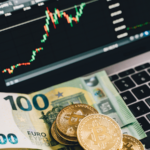Simply put, a non-fungible token or NFT is a token that exists on the blockchain that cannot be replicated or replaced by another due to the underlying data attached to it, be it an image, video, or song. This is in contrast to a fungible token like Bitcoin, where there is no clear difference between one Bitcoin and another.
The NFT provides verifiable ownership of the token and therefore also of everything that is connected to it, guaranteeing authenticity, and is protected from theft because it is protected on the blockchain.
Table of Contents:
How easy is it to mint an NFT?
It’s actually quite easy to mint an NFT because most markets have an infrastructure in place so that all a user has to do is follow steps that are essentially just interactions with a smart contract.
Once you’ve chosen the NFT market you want to use, the only thing you need to do is have a browser wallet like Meta Mask, something you want to mint, and enough gas to cover the transaction.
How to mint an NFT
As mentioned above, to mint an NFT you will need to choose a marketplace on which to sell your NFT, a blockchain compatible browser wallet (there are NFT markets on Ethereum, Binance, Tezos, Cardano and others), such as Meta Masks and sufficient funds to cover minting transactions. We’ll take a look at the coinage on OpenSea, and while it’s not exactly the same process for minting on every market, it’s similar.
The first thing you need to do is visit OpenSea and connect your wallet (if you have done this before it should connect automatically). You will need to verify that you want to link your wallet to the site.
Then, click “Create” then:
- Choose what you are coining, whether an image, video, etc.,
- Add the necessary information such as name and description.
- Upload the file and choose scarcity, uniqueness, or other customizable options.
- Click “Create” to start minting your NFT, you will need to sign transactions.
- The collectible you created will then appear in your wallet where you can then list it on the site.
- You can then sell the NFT for the assets of your choice, which means that if on Ethereum you can choose to accept ETH or any other ERC-20 token.
Where you can mint an NFT
In addition to OpenSea there are many other places where you can mint an NFT including:
- BakerySwap
- Rarible
- foundation
- Nifty Gateway
- Enjin Market
- SuperRaro
- Atomic market
- Known source
When choosing where to beat your NFT it is important to consider the fees associated with interacting with the blockchain on which the marketplace is hosted, the fees set by the market, and the royalties you can receive as an original artist.
Does it cost money to mint an NFT?
Yes, it costs money to mint an NFT. This does not refer to the commissions paid to the market through which you sell your NFT. The money it costs to mint an NFT is due to the network transaction fees that are required for sending all transactions on the blockchain. These transaction fees vary based on your network and network congestion.
For example, if you
use an NFT marketplace based on the Ethereum blockchain, such as OpenSea, you will have to pay ETH gas fees, but if on BakerySwap you would have to pay BNB gas fees. You could end up paying up to $100 USD just to mint an NFT on Ethereum depending on congestion at that time. Non-Ethereum options are much cheaper but have much less exposure, so there is a cost-benefit ratio in paying the extra fees for minting on Ethereum.
What are the benefits of NFTs for an artist?
At this point you may be wondering why an artist would choose to sell their work as an NFT rather than traditional methods such as a physical auction, print or art gallery, but there are actually some advantages to selling digital collectibles over physical ones.
Having more control over the display and distribution of their art is one of the biggest advantages for artists. They can choose where to sell it, how much to charge, their fees, and because it’s listed on a digital marketplace that operates 24/7, their work can be seen and purchased anytime, anywhere.
Speaking of commissions, they are one of the most beneficial parts of selling NFTs for artists. This is because depending on the market they receive not only their initial sale, but royalties from each subsequent sale of their art. This is something that does not exist with physical collectibles, since the only benefactor of secondary sales is the person who originally purchased it.
Are there any downsides to coining NFTs?
Currently, the only real problem when it comes to minting NFT is the environmental cost of using the Ethereum network, which currently runs on a proof of consensus of work, which means it requires a lot of CPU and therefore electricity. When Ethereum passes the bet test, this will be a somewhat controversial point.
If you want to avoid a proof of work blockchain until then you can mint NFTs on Cardano, Binance or Tezos which are all proof of stake.


